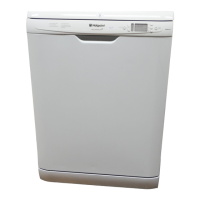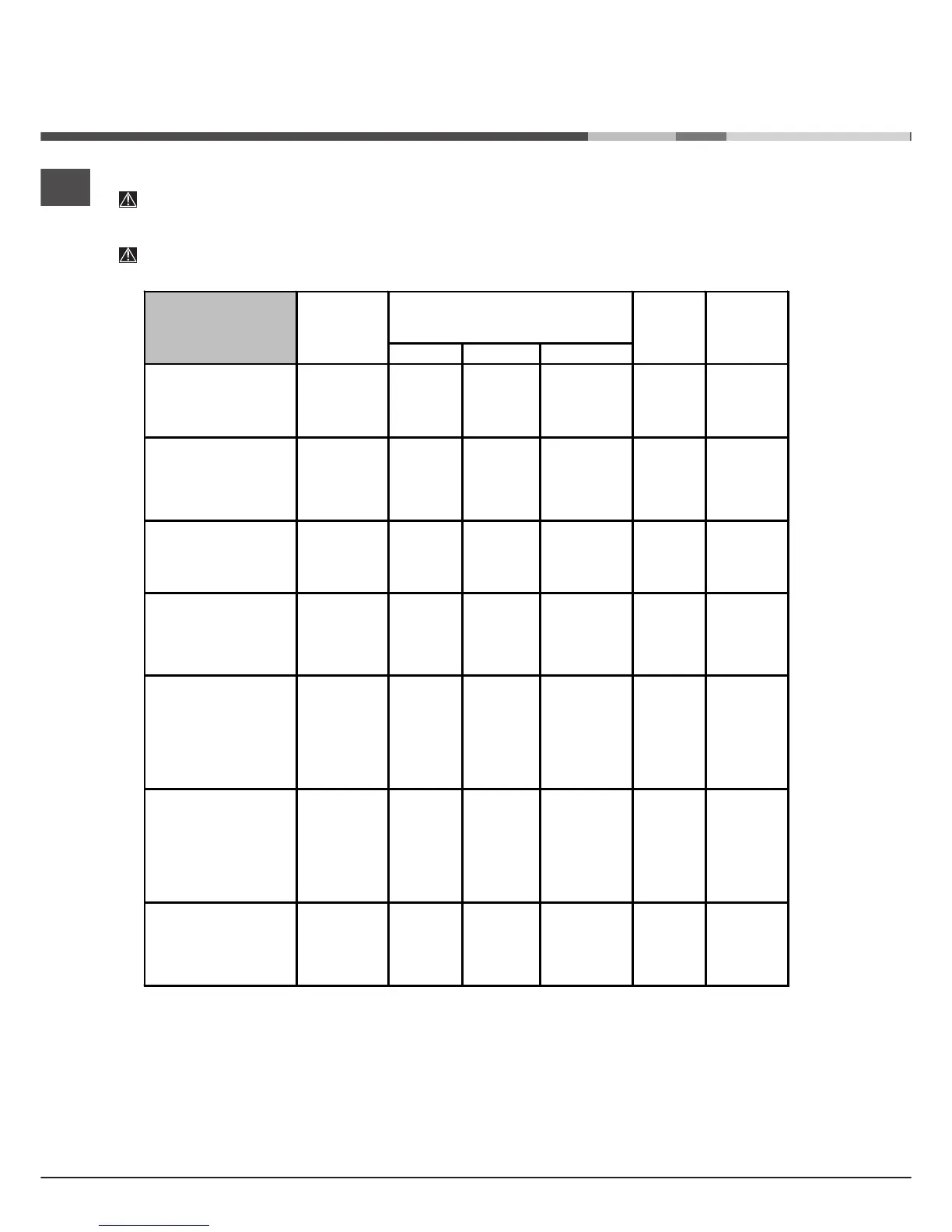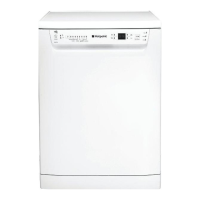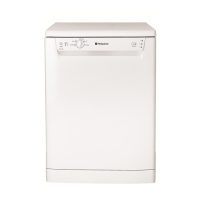
 Loading...
Loading...
Do you have a question about the Hotpoint FDW 70 and is the answer not in the manual?
| Type | Freestanding |
|---|---|
| Energy Efficiency Class | A |
| Washing Performance Class | A |
| Drying Performance Class | A |
| Number of Programs | 7 |
| Height | 85 cm |
| Width | 60 cm |
| Depth | 60 cm |
| Delay Start | Yes |
| Half Load Option | Yes |
How to place and balance the dishwasher on the floor for stable operation.
Instructions for attaching the drain hose to a drain point or sink.
Guidance on preparing for and running the initial wash, including salt loading.
Specifications like dimensions, capacity, water pressure, and power ratings.
Steps for replacing the power plug if it doesn't fit the socket.
Guidance on replacing the power cable, advising professional help.
Detailed steps for attaching the water supply hose to the tap.
Information about adaptors for connecting the inlet hose to various taps.
Instructions for connecting the drain hose to a standpipe or sink trap.
Instructions for detaching the dishwasher's top shelf for installation.
How to level the unit and fit it correctly under the kitchen worktop.
Labeled diagram identifying the main components of the dishwasher.
Explanation of buttons, displays, and indicator lights on the appliance.
Details on the indicator lights showing cycle status and warnings.
Tips for loading plates, pots, and pans in the lower basket.
How to place cutlery, knives, and utensils for safe and effective washing.
How to load glasses, cups, and lighter items in the upper basket.
Instructions for changing the height of the upper basket for better loading.
List of materials and items unsuitable for dishwashing due to damage risk.
Step-by-step guide to initiating a wash cycle from turning on the tap.
How to correctly add detergent for effective washing and to avoid excess foam.
Explanation of functions like Delayed Start and Half Load for optimized cycles.
Setting a timer for the wash cycle to begin at a later, convenient time.
How to use the half load option for smaller washes to save resources.
Using the button for multi-functional tablets, potentially extending cycle time.
A comprehensive table detailing cycles, detergent use, drying, and durations.
Filling the rinse aid dispenser and adjusting its level for optimal drying.
Fine-tuning rinse aid dosage to correct streaks or water marks on crockery.
Filling the salt dispenser to prevent limescale and improve wash results.
Setting the salt dispenser based on local water hardness for effective softening.
Steps to safely disconnect power and water before cleaning or maintenance.
How to clean the external surfaces, control panel, and interior.
Tips to keep the dishwasher fresh by cleaning seals and leaving the door ajar.
How to clean the rotating arms that spray water to prevent blockages.
Instructions for cleaning the filters that remove food residue from wash water.
Preparing the appliance for long-term storage by emptying and disconnecting it.
Essential safety rules for operating the dishwasher, covering electrical and physical hazards.
Specific safety advice for households with children, focusing on detergent and door safety.
Guidance on recycling or disposing of old dishwashers according to environmental regulations.
Tips for efficient operation to reduce energy and water consumption.
Methods to reduce water and energy usage, such as full loads and appropriate cycles.
Checks for when the appliance fails to power on, covering plug and power issues.
Causes and solutions for drainage issues, including bent hoses or clogged filters.
Reasons for unusual noises during operation, such as rattling or foam.
How to fix issues with film or limescale on dishes, related to salt or rinse aid.
Solutions for streaking or bluish residue on crockery, often due to rinse aid dosage.
Reasons why dishes are not drying correctly, including cycle selection or rinse aid issues.
Causes and fixes for dishes not being cleaned properly, such as overloading or dirty filters.
Troubleshooting water intake problems or tap shut-off alarms, including reset procedures.
Addressing alarms related to water loading solenoid valve issues and potential flooding risks.
Resolving alarms indicating a blocked filter, requiring cleaning and reset.
Key phone numbers and website for Hotpoint customer service and technical support.
How to register the appliance to activate guarantees and receive benefits.
Information on ordering genuine replacement parts and optional accessory products.
Coverage for breakdown repairs for twelve months from the date of purchase.
Information on the extended 5-year parts guarantee, conditional on registration.
Options for purchasing additional repair protection plans for long-term coverage.
Details of free advice and assistance provided for the first 90 days of ownership.











